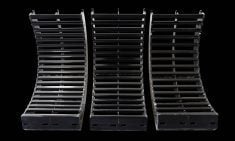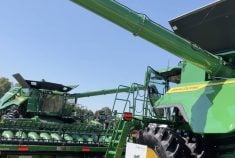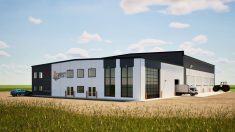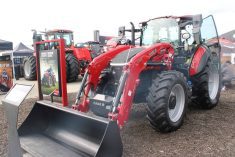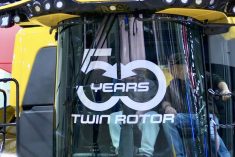Glacier FarmMedia – Prices for farm equipment continue to rise. And it’s not just fancy new iron that’s causing farmers to do double takes.
How does $62,972 sound for a 1994 New Holland 9680 tractor? How about $49,995 for a 1995 John Deere 1850 air drill? Or $80,000 for an older tandem axle grain truck?
“You’re seeing an increase in used equipment pricing because of the manufacturers’ failure to deliver new equipment in a timely manner,” said John Schmeiser, CEO of the Western Equipment Dealers Association. “Delivery times are really unreliable, and it’s still supply chain issues that manufacturers are working through, and we don’t anticipate it will go away any time soon.”
Read Also

Seeding Indigenous agricultural prosperity
National Circle for Indigenous Agriculture and Food says Indigenous agricultural success needs strong relationships.
Relatively low interest rates and high commodity prices, prospects of a decent harvest and more farmers vying for a limited amount of used equipment are additional factors, said Schmeiser.
His organization recently surveyed more than 100 equipment dealers.
In July, used equipment prices were up six per cent compared to June. Four-wheel-drive tractors were up five per cent; tractors (100 hp and up) and sprayers were up six per cent over the previous month; and combines were up three per cent from a month earlier.
If the latter seems a bit more reasonable, consider that combine prices have increased by three to five per cent every month this year.
“That just brings us into an unprecedented period that we are in right now,” said Schmeiser. “I’ve worked with the dealer association since 1996 and we have never seen such a prolonged period of month-over-month increases like this.”
Combine prices also rose steadily last year but by one or two per cent a month, and sometimes went a couple of months without a rise.
The current month-by-month upward climb has turned the selling of equipment on its head.
“What’s amazing to us is you can almost make the argument that the longer a used piece of equipment is sitting on the lot, dealers are asking more for it, because they know the demand for it is there,” said Schmeiser.
“They are basing that demand off quotes and interest they are getting from the customers. Especially when it comes to used combines at this time of year, customers are looking at their crop, looking at the potential.”
Prices for new farm equipment rose approximately 16 per cent in the last 18 months, said Jim Wood of Rocky Mountain Equipment.
That means a four-wheel-drive tractor that cost $600,000 in the spring of 2021 is now fetching $696,000, and it’s the same for what was a $600,000 combine. A $500,000 sprayer now costs around $580,000.
Inventory remains low, he said, “but keep in mind that makes everybody’s trades worth more,” said Wood. “What sometimes gets lost is everyone is like, ‘Oh my gosh, a combine is $700,000.’ Yeah, but your trade from two years ago is worth more than what you paid for it.”
The problem of expensive equipment isn’t new, said Jason Lenz, who farms near Bentley, Alta. But the current rate of increase is not only much higher, there’s no end in sight.
“I know my dealer continues to talk every spring about these seven to 12 per cent increases on just about any new piece of farm equipment,” he said.
“But I think the surprising thing for us farmers is the price the used, older equipment is going for. That’s probably the biggest sticker shock for us.”
He pointed to an older tandem axle grain truck he recently saw listed for $80,000.
“We used to buy brand-new grain trucks for $85,000 or less not that long ago,” he said. “So yeah, it’s a concern. It’s obviously a huge capital cost for any farm. It makes it difficult for smaller farmers to afford newer equipment.”
Making matters worse, even 15- to 20-year-old equipment can require factory software and a technician to diagnose mechanical problems, said Lenz. Most farmers can fix their own equipment but now that landscape is changing.
“That makes it really difficult,” he said. “The general maintenance on new and old equipment, most farmers are doing a lot of that themselves on their farms. But if you have any sort of breakdown with your engine or sensor pulling off, it pretty much means you must spend the money to have a mechanic come out and fix it for you.”
While it’s common for equipment manufacturers to raise prices annually, between one and four per cent was the typical increase, said David Davidson, a product manager at Iron Solutions, an information provider and analytics company dealing with farm equipment.
For example, from 2017 through 2020, John Deere 9R series 4WD tractors went up 1.7 per cent and 3.8 per cent annually.
“We’re hearing from some large equipment dealers that something different is happening today,” said Davidson. “With new equipment supply chain interruptions and new inflationary pressures, one dealer reported seeing new selling price increases by larger-than-normal rates and that the timing of these price increases is atypical.”
– This article was originally published at the Alberta Farmer Express.



